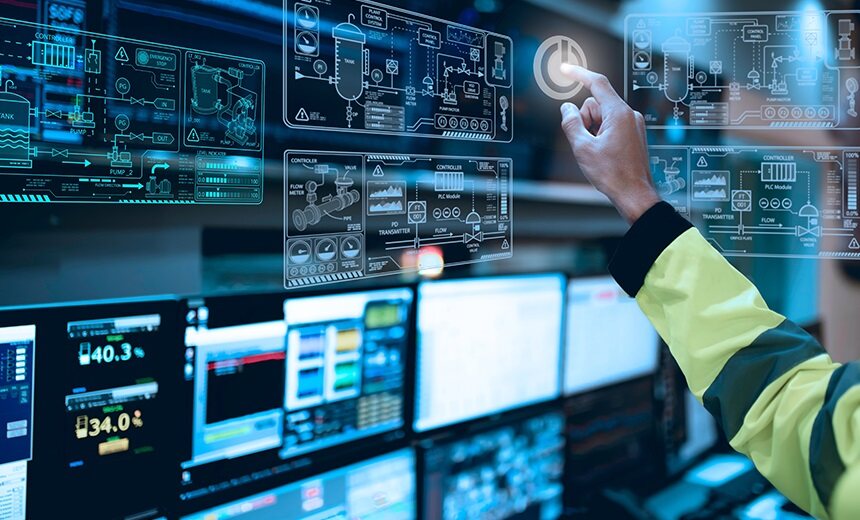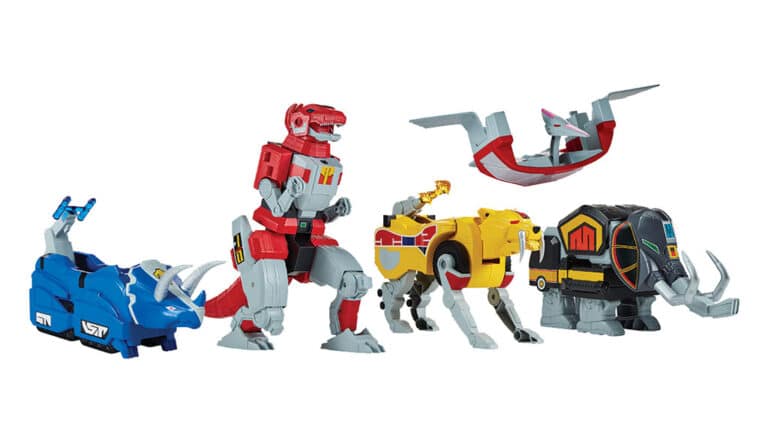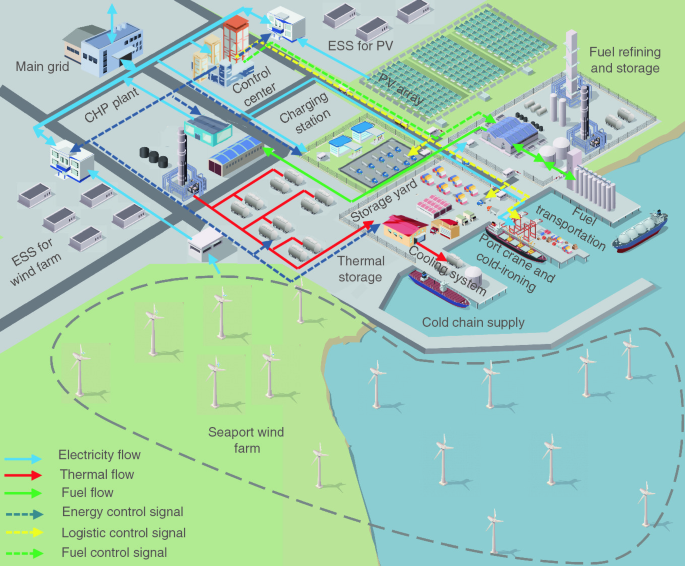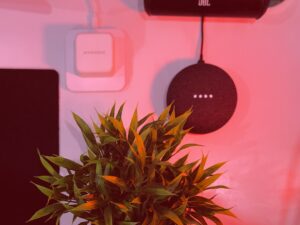In the sprawling, complex ecosystems of modern industry—from bustling seaports and smart cities to automated factories and vast energy grids—the margin for error is shrinking while the demand for efficiency is skyrocketing. The traditional model of siloed operations, reactive problem-solving, and manual oversight is becoming untenable. A new paradigm is emerging, one that equips these massive enterprises with a digital nervous system. This is the world of the Unified Command Control Centre, a sophisticated fusion of Artificial Intelligence (AI), the Internet of Things (IoT), and advanced robotics, transforming passive infrastructure into sentient, self-optimizing entities. By harnessing a constant stream of data from a web of interconnected sensors, these command centers provide a holistic, real-time view of operations, enabling predictive insights, automated responses, and unprecedented levels of coordination that are setting new benchmarks for productivity and safety.
This technological convergence is more than just an incremental upgrade; it represents a fundamental shift in how we manage the physical world. It’s the central theme in the latest AI Sensors & IoT News, where the focus is moving beyond individual gadgets to system-wide intelligence. The implications are profound, touching everything from global supply chains and urban planning to energy consumption and emergency response. This article delves into the architecture of these intelligent systems, explores their transformative applications, outlines best practices for implementation, and looks ahead to the future of AI-driven industrial operations.
The Anatomy of an AI-Powered Unified Command Center
A Unified Command Control Centre (UCCC) is the brain of a smart operation. It ingests, processes, and acts upon vast quantities of data collected by a distributed network of sensors and devices. Its architecture can be broken down into three fundamental layers: the perception layer (sensors), the connectivity layer (network), and the intelligence layer (AI and analytics).
The IoT Sensor Layer: The Digital Senses
This is where the physical world is translated into digital data. The sheer variety of sensors deployed in a modern industrial environment is staggering, each serving as a specialized digital sense organ. The latest AI-enabled Cameras & Vision News highlights the critical role of computer vision. High-resolution optical and thermal cameras, often mounted on drones or fixed infrastructure, monitor everything from container movements and traffic flow to equipment temperature and security perimeters. LiDAR (Light Detection and Ranging) sensors create detailed 3D maps of the environment, crucial for the navigation of Autonomous Vehicles News-worthy trucks and cranes. Acoustic sensors can detect the subtle hum of failing machinery long before a catastrophic breakdown, while environmental sensors monitor air quality, radiation levels, and weather conditions. Even simple GPS and RFID tags provide mission-critical location data for every asset, from a single package to a massive cargo ship.
The Connectivity Backbone: The Neural Pathways
All the data generated by these sensors must be transmitted reliably and with low latency to the intelligence layer. This is where robust connectivity solutions like 5G, Wi-Fi 6, and LoRaWAN (Long Range Wide Area Network) come into play. 5G is particularly transformative for these applications due to its high bandwidth and ultra-low latency, enabling real-time control of machinery and processing of high-definition video streams. This reliable data transmission is the lifeblood of the system, ensuring the command center has an accurate, up-to-the-second picture of the entire operational landscape. This area is a hot topic in AI Edge Devices News, as processing data closer to the source reduces network strain.

The AI Brain: From Data to Decision
At the heart of the UCCC is the AI and analytics platform. This is where raw data is transformed into actionable intelligence. Machine learning models sift through petabytes of information to identify patterns, anomalies, and predictive trends. For example, an AI might analyze vessel arrival data, weather forecasts, and ground crew availability to create an optimal docking schedule that minimizes turnaround time. A computer vision algorithm flags security breaches or safety violations in real-time, automatically alerting personnel. This “brain” can be centralized in the cloud for heavy-duty processing or distributed to the edge. AI Edge Devices News frequently covers how powerful, small-form-factor devices are now capable of running complex AI models directly on a camera or gateway, enabling faster responses without relying on a constant cloud connection.
Real-World Applications: Orchestrating Complexity at Scale
The true power of this integrated approach becomes clear when examining its application in diverse, high-stakes environments. These systems are not just theoretical; they are actively being deployed to solve complex, real-world problems.
Smart Ports and Logistics: The Heart of Global Trade
A modern seaport is a city unto itself, with thousands of moving parts. A UCCC orchestrates this complex ballet. AI-powered systems optimize the flow of trucks, scheduling their entry and exit to prevent congestion at the gates. Drones & AI News is filled with stories of autonomous drones conducting automated container inspections and monitoring stockpile volumes, feeding data directly into a digital twin of the port. The system can predict maintenance needs for cranes and other heavy machinery, scheduling downtime during non-peak hours to maximize availability. This holistic management can reduce ship turnaround times by hours, translating into millions of dollars in savings and a more resilient global supply chain. The data gathered also informs long-term strategic planning, a key topic in Smart City / Infrastructure AI Gadgets News.
Smart Cities: Enhancing Urban Life and Safety
The same principles are being applied to manage entire cities. A city-wide UCCC can integrate data from traffic sensors, public transport systems, and emergency services. During a major incident, the AI can automatically reroute traffic, adjust public transit schedules, and provide first responders with a live, consolidated view of the situation. It also plays a vital role in resource management, a focus of AI for Energy / Utilities Gadgets News, by monitoring the electrical grid and water supply, predicting demand spikes, and identifying leaks or potential outages before they become critical. In this context, AI Security Gadgets News reports on how integrated camera networks with intelligent analytics help law enforcement monitor public spaces and respond more effectively to security threats.
Advanced Manufacturing and Worker Safety

In the factory of the future, a UCCC monitors the entire production line. AI Monitoring Devices News details how sensors on robotic arms and conveyor belts feed data into predictive maintenance algorithms. Computer vision systems perform quality control checks with superhuman accuracy, identifying microscopic defects in products. Furthermore, worker safety is enhanced through smart wearables, a trend crossing over from consumer Wearables News. Smart helmets and vests equipped with sensors can detect falls, exposure to hazardous materials, or a worker’s vital signs, automatically triggering an alert in the command center. This human-centric application is also seen in the rise of collaborative robots, a major theme in Robotics News and AI Personal Robots News, which work alongside humans under the watchful eye of the central AI.
The Implementation Blueprint: Best Practices and Common Pitfalls
Deploying a successful Unified Command Control Centre is a monumental task that requires careful planning, strategic investment, and a focus on both technology and people. Simply buying the latest hardware is not enough.
Best Practices for Success
- Start with a Clear Use Case: Don’t try to boil the ocean. Begin with a specific, high-impact problem, such as reducing truck congestion or improving equipment uptime. Demonstrate value and then scale the system incrementally.
- Prioritize Interoperability: The biggest challenge is often getting disparate systems from different vendors to communicate. Insist on open standards and APIs to create a cohesive data ecosystem rather than a collection of digital islands.
- Embrace a Hybrid Cloud/Edge Strategy: Use edge computing for tasks requiring real-time responses (like autonomous vehicle navigation or immediate safety alerts) and the cloud for large-scale data analysis, model training, and long-term storage. This balanced approach optimizes both speed and cost.
- Invest in Cybersecurity: Centralizing operational control creates a high-value target for cyberattacks. A robust, multi-layered cybersecurity strategy is not an option; it’s a prerequisite. This includes network segmentation, end-to-end encryption, and continuous monitoring.
- Focus on the Human-in-the-Loop: The goal is to augment human decision-making, not replace it entirely. The user interface for the command center must be intuitive, presenting complex information clearly. Operators need to be thoroughly trained, a concept echoed in discussions around AI Education Gadgets News. The system should function as a powerful AI Assistants News-style copilot for operations managers.
Common Pitfalls to Avoid

- Data Silos: Failing to integrate data from legacy systems can cripple the effectiveness of the AI.
- Poor Data Quality: The “garbage in, garbage out” principle applies. Inaccurate or incomplete sensor data will lead to flawed AI-driven decisions.
- Ignoring Change Management: Deploying such a system requires a cultural shift. Without buy-in from frontline workers and managers, the project is likely to face resistance and fail to achieve its full potential.
- Underestimating Scalability: The system must be designed from the ground up to handle a future explosion in the number of connected devices and data volume.
The Future Horizon: From Predictive to Prescriptive Intelligence
The evolution of these intelligent command centers is far from over. The next wave of innovation will push the boundaries of automation and insight even further, with trends from consumer tech often providing a glimpse of what’s to come for industrial applications.
We are moving from predictive analytics (what will happen) to prescriptive analytics (what should we do about it). The AI won’t just flag a potential equipment failure; it will automatically generate a work order, order the necessary parts, and schedule the maintenance crew. Generative AI, a hot topic in AI Tools for Creators News, will be used to run complex simulations, creating “digital twins” of entire operations to test new strategies in a virtual environment before deploying them in the real world. The user experience will also evolve. Operators might use AR/VR AI Gadgets News to virtually “walk through” a remote facility or use voice commands, similar to those discussed in AI Audio / Speakers News, to query the system for status updates. The seamless integration seen in Smart Home AI News, where various devices work in harmony, will become the standard for industrial environments, even incorporating autonomous cleaning bots reminiscent of advanced Robotics Vacuum News.
This future will also see deeper human-robot collaboration. As Robotics News continues to advance, fleets of autonomous drones, vehicles, and robotic arms will execute tasks with minimal human intervention, all orchestrated by the central AI brain. The ultimate vision is a fully autonomous, self-healing, and self-optimizing operation that runs with maximum efficiency and safety, 24/7.
Conclusion: The Dawn of the Sentient Enterprise
The convergence of AI, IoT sensors, and unified command centers marks a pivotal moment in the history of industrial operations. By endowing physical infrastructure with the ability to sense, think, and act, we are unlocking unprecedented levels of efficiency, safety, and resilience. This is not science fiction; it is the new reality for forward-thinking organizations across logistics, manufacturing, and urban management. The journey is complex, fraught with challenges related to data integration, cybersecurity, and organizational change. However, the rewards—a dramatic reduction in operational friction, enhanced predictive capabilities, and the creation of truly intelligent, responsive environments—are too significant to ignore. The era of the sentient enterprise has arrived, and it is poised to redefine the backbone of our global economy.










